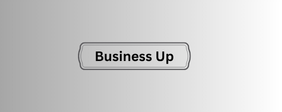Data Deletion and Disposal: This final stage involves the secure Mastering the and compliant removal of data that is no longer needed. Data disposal must adhere to all relevant regulations and legal requirements. For instance? a company might delete customer data that is no longer relevant for marketing campaigns? adhering to data privacy regulations. Proper data deletion prevents unauthorized access and protects sensitive information. Failure to adhere to data deletion policies can lead to data breaches and legal repercussions.
Real-World Examples and Case Studies Mastering the
Retail: A large retailer might use data from phone number list point-of-sale systems? website interactions? and customer surveys to understand purchasing patterns? personalize recommendations? and optimize inventory management.
Healthcare: Hospitals utilize patient data to track medical history? improve treatment outcomes? and ensure patient safety. Data privacy regulations like HIPAA are paramount in this industry.
Financial Services: Banks and investment firms analyze financial data to detect fraudulent activities? assess risk? and make investment decisions.
The data life cycle is a dynamic process that requires careful planning and execution. Each stage presents unique challenges and opportunities. Understanding these stages? implementing appropriate strategies? and adhering to how to choose the right phone number list provider data governance policies are crucial for effectively managing data throughout its lifecycle. By adopting a proactive and comprehensive approach to data management? organizations can unlock the full potential of their data assets? gain valuable insights? and drive informed decision-making. Ultimately? mastering the data life cycle is essential for success in today’s data-driven world.
Understanding the Data Collected by the CDC
Public Health in Action
The Centers for Disease Control and Prevention (CDC) is a only germany cell number grow crucial cornerstone of public health in the United States and globally. Its work relies heavily on data collection? analysis? and dissemination. Understanding what data the CDC gathers and how it’s utilized is vital for comprehending its impact on public health initiatives and the overall well-being of populations. This article delves into the multifaceted world of CDC data collection? exploring its scope? methods? and the profound implications for public health strategies.
